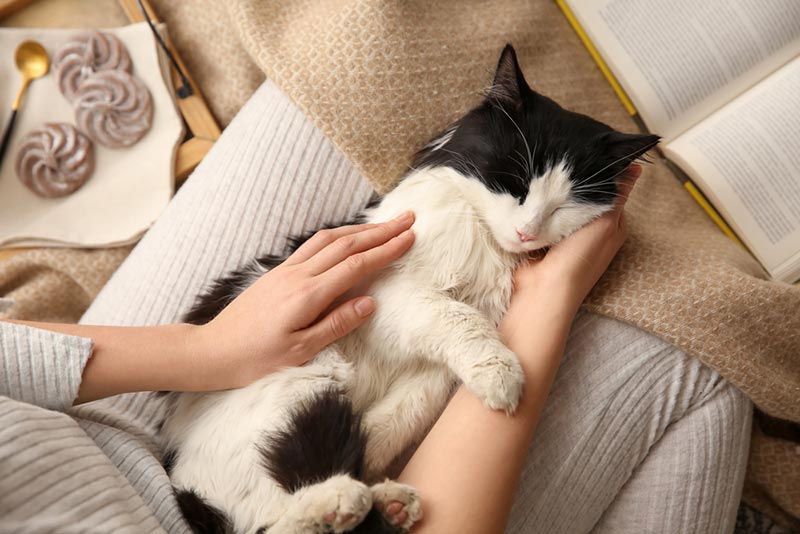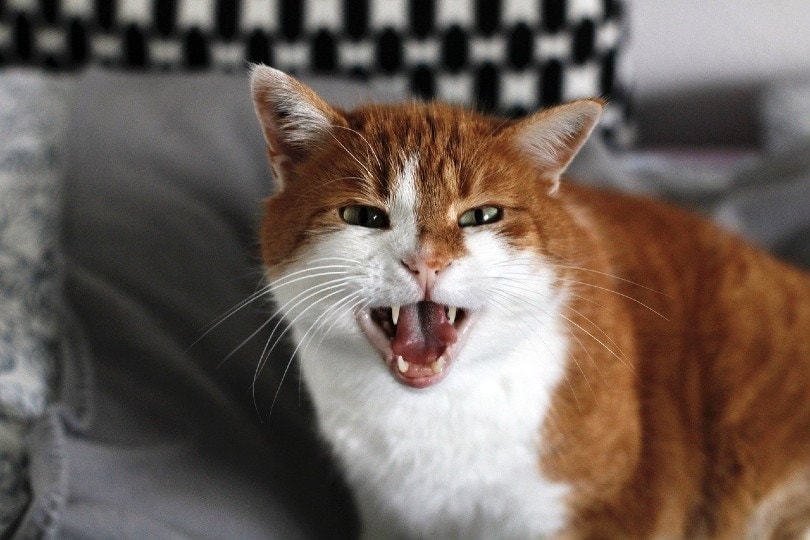Why Are Only Some Cats “Lap Cats”? Other Ways to Show Your Love

Updated on

Some cats are “lap cats,” and others aren’t, in much the same way that some people like hugs, and others will run away from you if you come near them with your arms outstretched. There are various reasons why your cat might be less cuddly than others, like its personality, breed, socialization, and age. Below, We’ll discuss the factors that influence your cat’s temperament and explore if there are ways you can make your lap a more tempting place to curl up in and take a nap.
Why Is One Cat a Lap Cat and Another Isn’t?
Unfortunately, the answer isn’t simple, which means we won’t be able to give you an easy solution that will turn your cat into a lap cat. However, we’ll examine the most common reasons your cat might avoid cuddling with you.

Age
When cats are young, they are much more interested in exploring, running about, and causing mischief. They have high energy levels and don’t have time for relaxing on your lap. As your cat ages, you might find that they seek time with you because they feel more vulnerable or have a stronger bond with you. Some cats take longer to mature and calm down than others, and if you have a young cat that isn’t fond of sitting in your lap, you may see its behavior change over time.
Early Socialization
A cat’s history, socialization, and experiences with humans in the past are all important in developing its personality. If your cat is a rescue, you might not be sure of its history; cats that have been handled a lot can act differently from cats without much experience with a kind human touch.
Socialization is most successful when a kitten is 2 to 7 weeks of age because they’re eager to learn and open to new experiences.1 It’s also important to note that there is a big difference between socialization and exposure. Exposing your kitten to a toddler who likes to scream in its ear and pull its tail is not the same as introducing it to several calm children who act appropriately around the kitten. The former could lead to a cat that dislikes children, while the latter results in a cat that loves children.
Equally, a cat that hasn’t interacted with a human will likely feel scared around them, and traumatic experiences can make a cat feel mistrustful and wary. That doesn’t mean all kittens that are socialized early become lap cats, of course.

Personality and Breed
Some breeds, like the Abyssinian, Persian, and Scottish Fold, are considered friendlier and cuddlier than others. However, some cats won’t ever be lap cats because that’s part of their personality, and that’s okay. Just because your cat doesn’t curl up in your lap doesn’t mean they don’t love you, but they probably show you in different ways.
Will Your Cat Ever Become a Lap Cat?
It’s important to understand our cats and respect their boundaries. Cats will let you know what they like, what they tolerate, and what they loathe entirely. You just need to look out for the signs.
The 5 Ways to Encourage Your Cat to Sit On Your Lap
1. Don’t Force It
Let your cat come to you and make your lap more inviting by draping a soft blanket over your legs. Never force your cat onto your lap or hold them there because it will only destroy your cat’s trust and could make them fearful of you. This is meant to be something nice, and forcing it changes it into an unpleasant interaction.

2. Create a Safe Space
There’s more to it than your cat trusting you; they must also trust the space. If it is chaotic and stressful, they aren’t going to relax. So, your first step might be making your cat more comfortable in their environment.
You could get a cat tree for the room, purchase new toys, and create some hiding places nearby so they feel safe. Cats feel more relaxed knowing they can easily escape to another room if their home becomes too noisy.
3. Positive Reinforcement
You can use their favorite treat, first leaving it at your feet and then, when they respond, putting another a little closer to you until there’s one in your lap. As they move closer, avoid reaching out and touching them because you want to make sure they continue to trust you.

4. Keep Lap Interactions Positive
You want your cat to associate your lap with a quiet, safe place to fall asleep. So, avoid pulling them into your lap when it’s time to clip their nails.
5. Spend Some Quality Time Together
Playing with your cat and spending quality time together strengthens your bond. If your cat associates approaching you with positive experiences, it just makes it more likely they will seek you out more often.

Other Ways to Show Your Cat You Love Them
Some cats won’t ever be lap cats, but it doesn’t mean they love you any less or that you love them any less, either. Sometimes it’s about discovering your cat’s love language and letting them know how much they mean to you. Examples of ways to show your cat you love them are:
- Get them a cardboard box to play in
- Slow blink at them
- Join in on playtime
- Spend time alone with them (especially important in a multi-pet household or a home with children)
- Have a grooming session
- Treat them to a new toy, bedding, comfy blanket, or cat tree
Final Thoughts
There are various reasons why some cats are lap cats and others aren’t. Sometimes it comes down to previous interactions with humans or lack of interactions. Or, it could be because your cat is still young and has far more important things to do than curl up on your lap for a cuddle.
Additionally, just because your cat isn’t a lap cat now doesn’t mean it won’t become one. There are ways to tempt your cat into your lap, but the key is to be patient and take it at your cat’s pace. If you have a cat that is averse to making you their nap time cushion, there are plenty of other ways to show them how much you love and appreciate them!
Featured Image Credit: New Africa, Shutterstock












